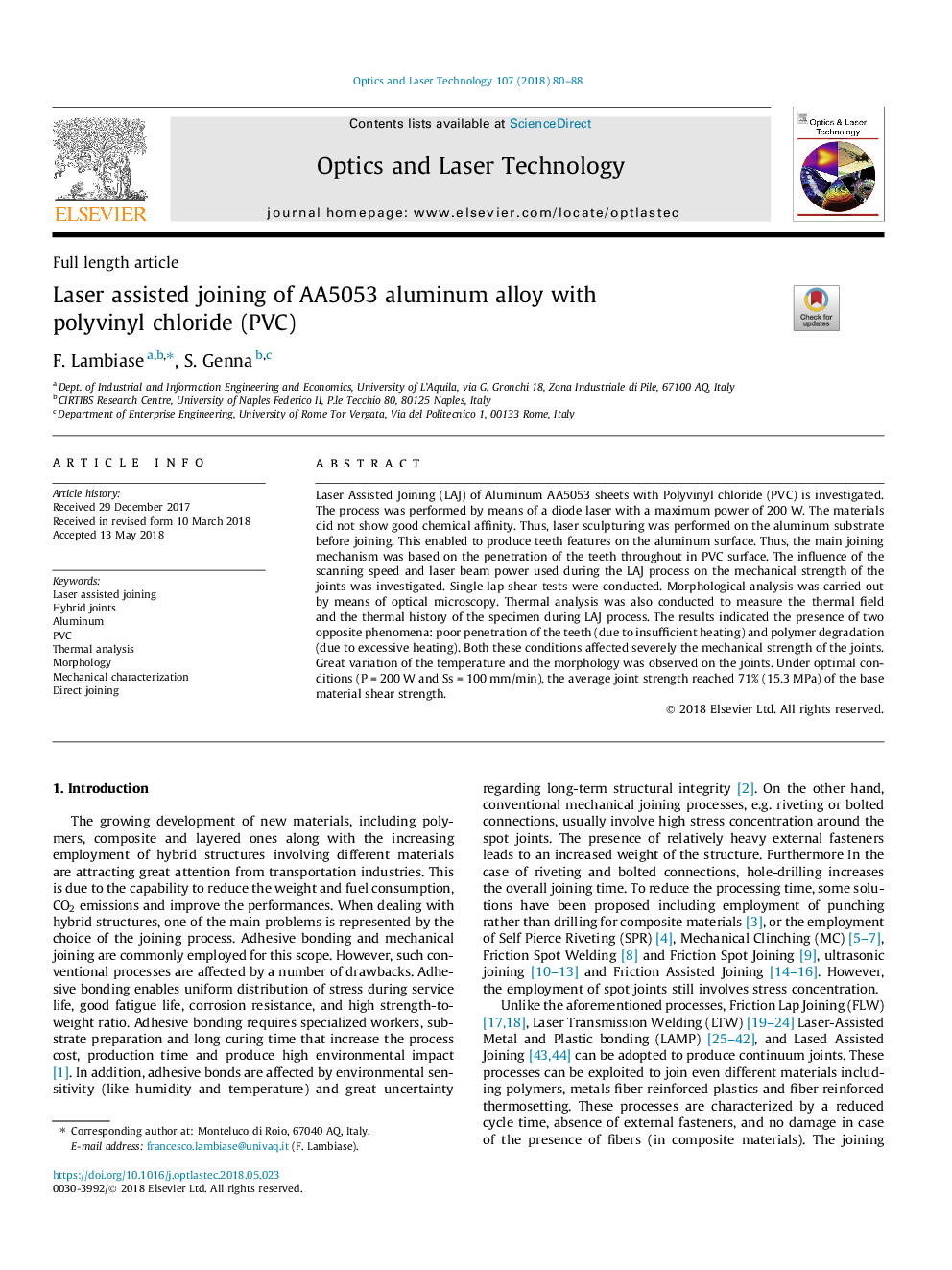| Article ID | Journal | Published Year | Pages | File Type |
|---|---|---|---|---|
| 7128054 | Optics & Laser Technology | 2018 | 9 Pages |
Abstract
Laser Assisted Joining (LAJ) of Aluminum AA5053 sheets with Polyvinyl chloride (PVC) is investigated. The process was performed by means of a diode laser with a maximum power of 200â¯W. The materials did not show good chemical affinity. Thus, laser sculpturing was performed on the aluminum substrate before joining. This enabled to produce teeth features on the aluminum surface. Thus, the main joining mechanism was based on the penetration of the teeth throughout in PVC surface. The influence of the scanning speed and laser beam power used during the LAJ process on the mechanical strength of the joints was investigated. Single lap shear tests were conducted. Morphological analysis was carried out by means of optical microscopy. Thermal analysis was also conducted to measure the thermal field and the thermal history of the specimen during LAJ process. The results indicated the presence of two opposite phenomena: poor penetration of the teeth (due to insufficient heating) and polymer degradation (due to excessive heating). Both these conditions affected severely the mechanical strength of the joints. Great variation of the temperature and the morphology was observed on the joints. Under optimal conditions (Pâ¯=â¯200â¯W and Ssâ¯=â¯100â¯mm/min), the average joint strength reached 71% (15.3â¯MPa) of the base material shear strength.
Keywords
Related Topics
Physical Sciences and Engineering
Engineering
Electrical and Electronic Engineering
Authors
F. Lambiase, S. Genna,
